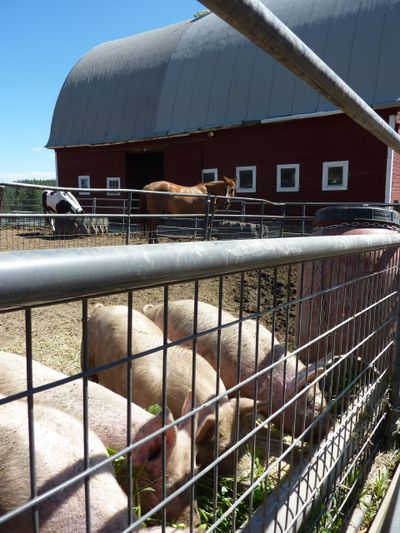U.S. hog supplies shrink just as demand begins taking off

Farmers trying to rebuild their shrinking hog herds are holding on to mother pigs longer, pushing up the price of meat prized by sausage-makers.
For U.S. producers, it’s a tug-of-war between hanging on to mother pigs to breed more piglets or sending the sows off to slaughter to take advantage of the highest prices in years for meat sought after for its flavorful fat content.
The welcome dilemma marks a turnaround from a year ago, and sets the stage for the U.S. industry to resume a herd expansion after a pandemic-driven contraction.
“Farmers are getting optimistic that there’s going to be a market for pork,” Len Steiner, principal of Steiner Consulting Group in New Hampshire, said in an interview.
Leading the demand are sows, which are generally heftier animals with flavorful fatty meat that’s sought after for processed products like sausages.
Prices for sows have more than doubled since the start of the year to about 87 cents a pound, topping the 44% gain for slaughter-ready hogs, according to U.S. Department of Agriculture data.
The disparity comes as farmers retain more of their breeding animals with eyes on expanding.
About a year ago, farmers lost market access when pork-packing plants shut down. Some hogs were sold at bargain prices or given away for free while thousands were euthanized and turned into compost.
By December, farmers were holding the fewest amount of breeding animals in three years.
“Some of the cutbacks they implemented are starting to end and they will hang onto the sows,” Steiner said.
That could drive up sow prices even further and contribute to higher meat prices at butchers, grocery stores and restaurants alike.
Hog prices have already been soaring in the U.S., with Chicago lean hog futures trading at the highest levels since 2014, as new outbreaks of the African swine fever virus in China threaten the world’s biggest hog herd.
China’s animal-disease resurgence and outbreaks in top pork-supplier Europe could keep demand strong for U.S. meat exports as the U.S. starts reopening restaurants and resuming sporting events, driving up more domestic sales of hot dogs and other pork products.
Still, any expansion of the U.S. herd could be tenuous for the nation’s $23.4 billion pork-producing industry. The herd as of March 1 totaled 74.8 million, down 1.8% from a year ago, USDA’s quarterly report Thursday showed.
That was a bigger drop than the 0.2% decline predicted in a Bloomberg survey. The breeding herd slumped 2.5%, compared with the estimate for a fall of 1.3%.
Regardless, sows will be in demand for producing litters or sausage products like bratwurst, according to Terry Houser, extension meat specialist at Iowa State University.
“Sows really lend themselves well to grind them up and put it right into the product,” Houser said. “Realistically, you can’t make a more perfect animal.”